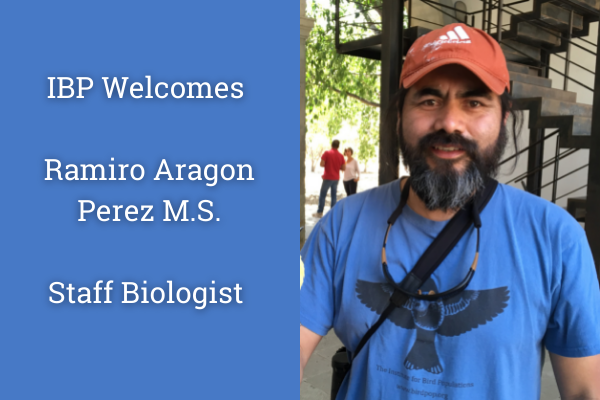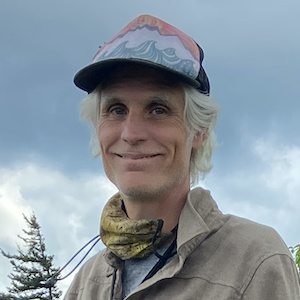Last year the IBP year-round team added three new members, reflecting the growth of our existing work in the Sierra Nevada, our recent expansion into the Southwest, and the retirement of long-time staff member, Ron Taylor. One of those new faces is staff biologist Ramiro Aragon Perez.
Since 2015, IBP has been working with the US Forest Service in the Sierra Nevada to survey for California Spotted Owls and Northern Goshawks. Finding their nest locations and collecting additional information about their habitat use helps the Forest Service protect these areas as they plan forest management activities to reduce wildfire risk. In addition, these surveys help establish a baseline for assessing how these species respond to wildfire risk reduction activities. In the spring of 2021, this project was expanding and it was clear that we needed more hands on deck.
We not only found another hand, we found an old hand! (Note that we are talking experience, not years, here.) Ramiro has been working with birds for over 20 years and earned his master’s degree at Oregon State University, where he used LiDAR-derived variables to model the distribution of forest birds. (LiDAR is a form of remote-sensing that produces precise three-dimensional imagery of the earth’s surface, or, in this case, vegetation structure.) Ram has worked on everything from Barred Owls to Black Oystercatchers. Last spring he hit the ground running on the Spotted Owl and Northern Goshawk project and had a busy and exciting field season. Once field work wrapped up we had a chance to get to know him a little bit.

A Canyon Wren on a roof. Photo by Andy Reago and Chrissy McClarren/Flickr.
How and when did you first get interested in birds?
I grew up in the Central Valley of Oaxaca in rural southern Mexico. Inspired by nature documentaries I watched on TV, I loved to explore when I was a child. During that time, I realized that some birds were present only during the winter, in fact I noticed that Cedar Waxwings were in the Valley every other winter. I remember looking very hard for at least one waxwing during the absent years. Another bird that I waited for every winter was the Lesser Nighthawk. I liked to see them at dusk flying over the fields hunting insects. I remember spending a lot of time observing them. I also got more interested in birds when I started matching the birds with the birdsongs I heard on my way to school. The one that I remember best is the Canyon Wren- I was so happy when I finally saw one singing from an old adobe house.
You have a long history with IBP! Can you talk a little bit about that?
I spent my first MAPS season as an intern in 2001 in Central Texas. That was a great experience. I learned so much about bird banding that season from my crew leader–now my best friend–Kerry Wilcox that I decided to continue collaborating with IBP. I later did another season as a MAPS intern in Yosemite, then later a couple more as a field biologist supervisor in Oregon. In addition, I ran a few bird banding stations in Oaxaca as part of the MoSI program.

A Vermillion Flycatcher, one of Ram's favorite birds. Photo by Jaime Robles/Flickr.
Why were you interested in working with IBP again?
Because IBP is an organization where scientific research on bird populations is a fundamental part of its work. I also like how IBP collaborates with local, national and international entities to design or assess management strategies, using cutting-edge science- making a real impact on the conservation of birds.
What is the best part of your job so far?
Being able to spend time in the woods studying birds. I don’t see myself doing anything else.
We’re thrilled to have Ramiro back on the IBP team full-time!






